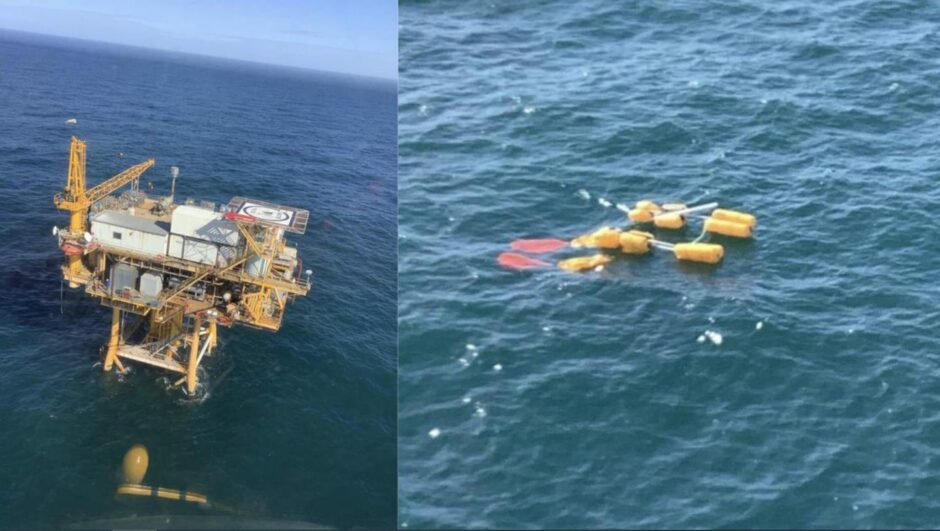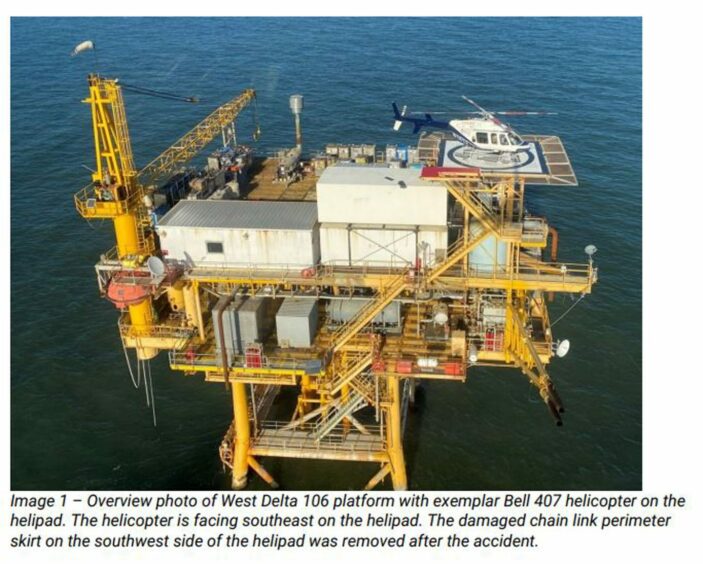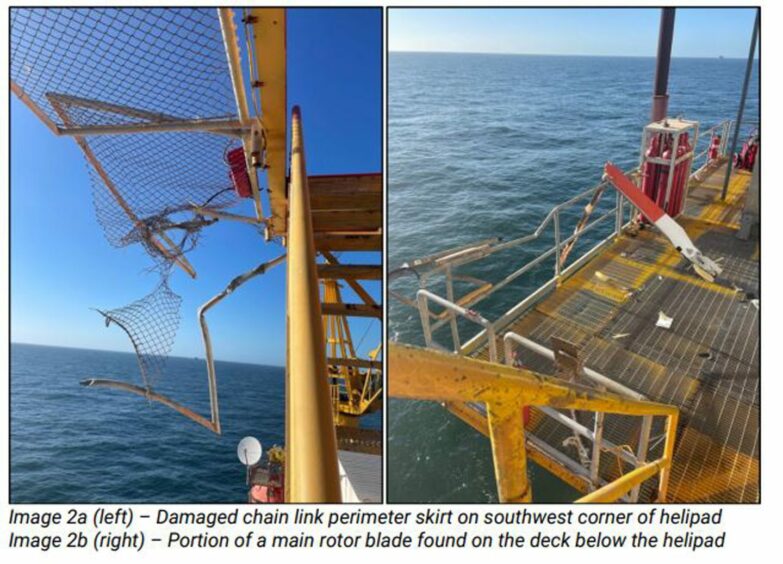
A new report from the US’ transport safety regulator sheds new light on the incident which killed three workers and a helicopter pilot in December.
The National Transportation Safety Board (NTSB) last week published preliminary findings from its investigation into a crash involving a Rotorcraft Leasing Company-operated (RLC) Bell 407 on 29 December.
The aircraft went down while departing the Walter Oil and Gas-operated West Delta 106 platform in the Gulf of Mexico, killing three crew members and the pilot.
A search for survivors was called off by the US Coastguard several hours after the incident, with the remains of the four occupants later recovered in January.
The NTSB reports that there are no eyewitnesses or surveillance video of the helicopter’s departure from the helipad but several individuals who remained on the platform “heard the engine noise increase for takeoff and then the sound of items hitting the platform.”
They immediately went outside and saw the helicopter fuselage floating inverted in the water, with its tail boom separated and lying next to the airframe.
“Several individuals on the platform then boarded and launched the platform’s emergency escape capsule, but the helicopter fuselage sunk before they could render assistance to the four occupants who remained inside the fuselage,” the NSTB said.
Later examinations of the helipad showed red paint from the helipad stairwell was gouged and scratched near, while the skirt near the stairwell was damaged with metal posts bent and broken and the skirt wire damaged and torn.
It also found debris “scattered throughout multiple decks” below the helipad, most of which it suggested was components from the aircraft’s main rotor blades.
A six-foot-long portion of a main rotor blade came to rest on a metal handrail located on the deck below the helipad, while multiple pieces of dark tinted acrylic, consistent with the cockpit overhead windows from the helicopter, were also found on the same platform deck.
‘Sub-standard practice’
In a blog post on the investigation, aviation assurance firm Aerosurrance noted this was operator RLC’s third accident of 2022, and its second fatal accident of the year.
In January 2022 another B407 impacted the ground near Houma, Louisiana, killing both people onboard.
And in December a Bell 206 got its skids stuck in a helipad’s perimeter railing and was hurled into the Gulf as it attempted to take off from a platform – an incident Aerossurance judged to be “very similar” to the fatal crash in question.
While the NSTB didn’t comment on the procedure, Aerossurance also noted that the lack of witnesses was due to the helideck “being operated without a Helideck Landing Officer (HLO) & Helideck Assistants (HDAs) and therefore without fire and rescue cover.”
It said this was a “sub-standard practice” common on small Gulf of Mexico installations.
Furthermore, the installation appears not to have been equipped with a fast rescue craft, with the crew instead forced to use the installation lifeboat, which Aerossurance noted was “an unsuitable craft for attempting a rescue.”
“We would expect a competent safety investigation to consider the operator’s safety management and especially its response to the accident two weeks before,” the firm noted in its blog, alongside other key safety issues.
 © Supplied by NTSB
© Supplied by NTSB © Supplied by NTSB
© Supplied by NTSB